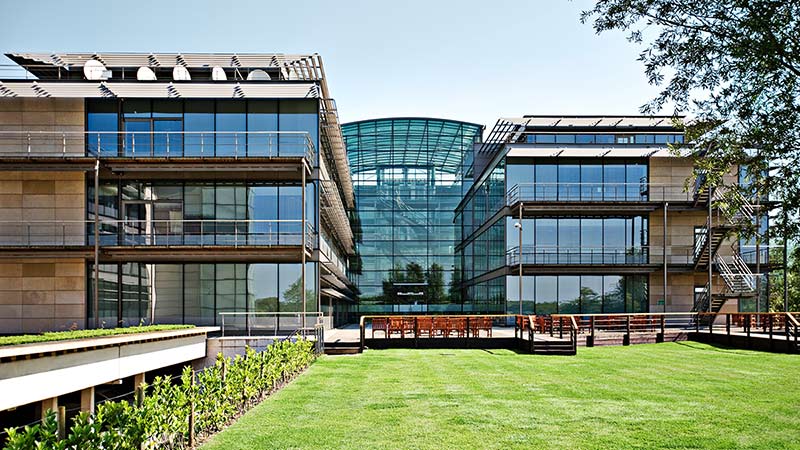Cisco Sets New Standard for Production-Grade Kubernetes, Enabling Enterprises to Deliver Innovation Faster with AppDynamics and Cisco CloudCenter
With AppDynamics for Kubernetes, enterprises will have full visibility into how Kubernetes-based applications impact customer experiences and business performance
With Cisco CloudCenter 4.9, organizations can now deploy and optimize Kubernetes-based applications across on-premises and multicloud environments
San Jose — May 1, 2018 — Cisco (NASDAQ: CSCO) today announced Kubernetes support for AppDynamics and Cisco CloudCenter™, enabling enterprises to quickly and confidently adopt Kubernetes in production, and create and modernize their applications for the multicloud era. Now, enterprises can easily harness the value of Kubernetes to help deliver experiences that exceed their customers’ expectations for scale, sophistication, and velocity.
Companies are rapidly adopting containers on the promise of increased application agility. Releasing application features rapidly is critical as customer expectations have never been higher for real-time, personalized, and seamless experiences at every interaction. Despite this promise, enterprises are finding there are challenges with unlocking the full value of containers as they move applications from development into production environments in data centers and the cloud. In fact, according to Gartner, “By 2020, less than 20 percent of projects for containerizing legacy applications will be successful.”
Together, Cisco CloudCenter 4.9 and AppDynamics for Kubernetes set a new standard for Kubernetes in production by allowing enterprises to seamlessly deploy, monitor, and optimize their Kubernetes-orchestrated applications both on-premises and in public cloud environments. Companies can use Cisco CloudCenter to deploy container-based applications with AppDynamics monitoring enabled on deployment. AppDynamics for Kubernetes can detect and report on dynamic conditions at the application or cluster level. Cisco CloudCenter can be triggered to optimize performance for seamless user experience until abnormalities are resolved. This helps IT operations staff adapt to the new production challenges of managing containerized applications in a dynamic Kubernetes environment.
“The Kubernetes platform has emerged as the de-facto container solution as customers accelerate adoption of containerized application architectures,” says Kip Compton, vice president, Cisco Cloud Platform and Solutions Group. “But organizations are still challenged to efficiently and confidently utilize Kubernetes as they modernize legacy applications and develop new cloud applications. With our latest Kubernetes support, customers can now easily adopt production-grade Kubernetes across multicloud environments.”
Unified monitoring for Kubernetes across multicloud environments
Kubernetes makes application deployment and operations more efficient, but organizations still struggle to gain visibility into Kubernetes performance and deployed applications to ensure flawless end-user experience. The new AppDynamics will give organizations the deepest visibility into application and business performance for unparalleled intelligence into containerized applications, Kubernetes clusters, and underlying infrastructure metrics. Enterprises will be able to:
-
Gain end-to-end visibility — AppDynamics for Kubernetes will provide granular level details on application, Kubernetes and Docker container performance metrics. At the heart of it sits the AppDynamics Business Transaction—comprised of the required services within an environment that are called upon to fulfill and deliver a response to a user-initiated request such as login, search, or checkout in a retail scenario. Business Transactions reflect the logical way users interact with applications. Powered by the Business Transaction, AppDynamics for Kubernetes can drastically reduce the time it takes to identify and troubleshoot performance issues across Kubernetes clusters on multicloud environments by intelligently filtering performance metrics based on Kubernetes labels. This Kubernetes-label filtering means IT operations teams no longer need to monitor thousands of threads executing a similar service.
-
Faster root cause analysis —Traditional monitoring tools make it difficult to respond to poor user experiences due to alert storms caused by cascading microservice failures. By leveraging unique machine learning capabilities, AppDynamics for Kubernetes makes it simple to identify the root cause of a failure by baselining performance and intelligently alerting IT teams when problems occur.
-
Correlate Kubernetes performance with business metrics — Tagged metrics correlate business metrics such as customer conversion rate, or end-user experience with the performance of applications on Kubernetes platform. Health rules and alerts based on business metrics provide intelligent validation so every code release drives business outcomes.
Cisco CloudCenter 4.9 Kubernetes support
The new Cisco CloudCenter 4.9 is a key element of the open, hybrid cloud offering from Cisco and Google, announced in October 2017 and planned for availability later this year. Customers will be able to run production-grade containers on any infrastructure through the combination of Cisco CloudCenter 4.9, Cisco® Container Platform, and the Google Kubernetes Engine (GKE), part of the Google Cloud Platform (GCP).
For IT teams, running Kubernetes in production affects a range of existing virtual machine-based tools and operating processes on which IT relies to deliver services. As organizations transition to container-optimized IT operations, Cisco CloudCenter 4.9 enables organizations to create deployable blueprints that work across multicloud environments so customers can deploy and manage containerized and virtual machine-based workloads on premises and in the cloud. Cisco CloudCenter 4.9 enables customers to:
-
Support hybrid application topologies: With Cisco CloudCenter 4.9, containerized workloads can be deployed to a Kubernetes cluster on premises or in the cloud. IT operations teams can also deploy a declarative blueprint that includes container-based services as well as virtual machine-based or cloud-based services to a hybrid mix of Kubernetes and traditional virtual machine or cloud environments.
-
Empower developers without Kubernetes expertise: Cisco CloudCenter auto-generates the pod manifest file (YAML) specific to each deployment after the user selects the deployment environment. This approach avoids configuration parameters, and as a result keeps container workloads from getting locked into a single cloud. And it makes it easier for developers that aren’t proficient or interested in learning kubectl commands to tap the power of Kubernetes.
-
Apply IT governance and controls to Kubernetes: Cisco CloudCenter cost and usage controls, as well as roles and permissions can be set to determine who can deploy what, when, and where in different pre-production and production Kubernetes environments. Kubernetes alone doesn’t provide these types of IT controls that are critical for running containers in production at scale.
Sébastien Morissette, Senior Architect, Infrastructure and Security, Intact Financial Corporation.
“Our different entities across North America require continuous innovation and strong partnerships as we embrace digital initiatives to support services aimed at our customers. Cisco’s multicloud strategy and the solutions they deliver to operationalize IT at scale help address many of our key requirements. The addition of Kubernetes support across their solutions means that we will be able to innovate faster, with greater visibility into IT infrastructure and the application development lifecycle.”
Larry Carvalho, Research Director, Platform as a Service (PaaS), IDC
“Organizations are using containers to modernize traditional applications so they can reduce deployment time, improve business outcomes, and lower costs. Yet most organizations struggle to realize these benefits because they lack a cohesive container strategy. The organizations that are able to successfully monitor, deploy, and manage containers in a consistent and secure way across multicloud environments will be more likely to drive speed and agility for the business, resulting in greater revenue that can be strategically allocated to digital transformation efforts.”
Ryan Marsyla, Strategic Director, Architecture, Trace3
“As customers scale application architectures and work to reduce costs and complexity, the adoption of Kubernetes is fueling investments in container orchestration and running containerized workloads in production. The addition of Kubernetes support in Cisco CloudCenter and AppDynamics will enable our mutual customers to have predictable results as they monitor, manage, and optimize performance of containerized workloads in a hybrid cloud environment. When Trace3 engages with customers to refactor application stacks, we often see many customers juggling virtualized and containerized workloads in a mixed architecture model. Cisco CloudCenter addresses this by providing the governance and automation necessary to manage portions of both virtualized and containerized workloads, while AppDynamics monitors application performance.”
Availability
Cisco CloudCenter 4.9 is available now. AppDynamics for Kubernetes will be available by May 9. Cisco CloudCenter and AppDynamics can be purchased as standalone subscription-based software offers, or bundled together through the Cisco Multicloud Portfolio as Cloud Consume. They also are available with Cisco HyperFlex™ through Cisco SmartPlay bundles.
Additional resources
-
Read more about AppDynamics for Kubernetes
-
Read more about Cisco CloudCenter
-
Cisco Cloud Blog on Cisco CloudCenter 4.9
-
Cisco Executive Blog: Setting a New Standard for Production-Grade Kubernetes
-
Learn more about Cisco Cloud Solutions
About Cisco
Cisco (NASDAQ: CSCO) is the worldwide technology leader that has been making the Internet work since 1984. Our people, products, and partners help society securely connect and seize tomorrow’s digital opportunity today. Discover more at newsroom.cisco.com and follow us on Twitter at @Cisco.
Cisco and the Cisco logo are trademarks or registered trademarks of Cisco and/or its affiliates in the U.S. and other countries. A listing of Cisco's trademarks can be found at www.cisco.com/go/trademarks. Third-party trademarks mentioned are the property of their respective owners. The use of the word partner does not imply a partnership relationship between Cisco and any other company.





